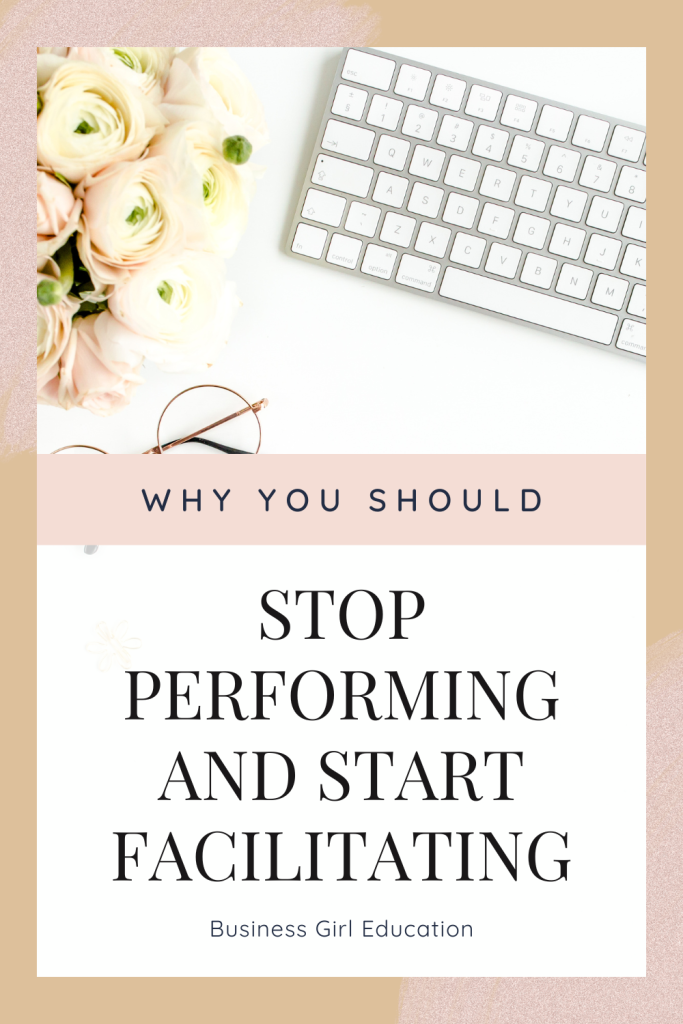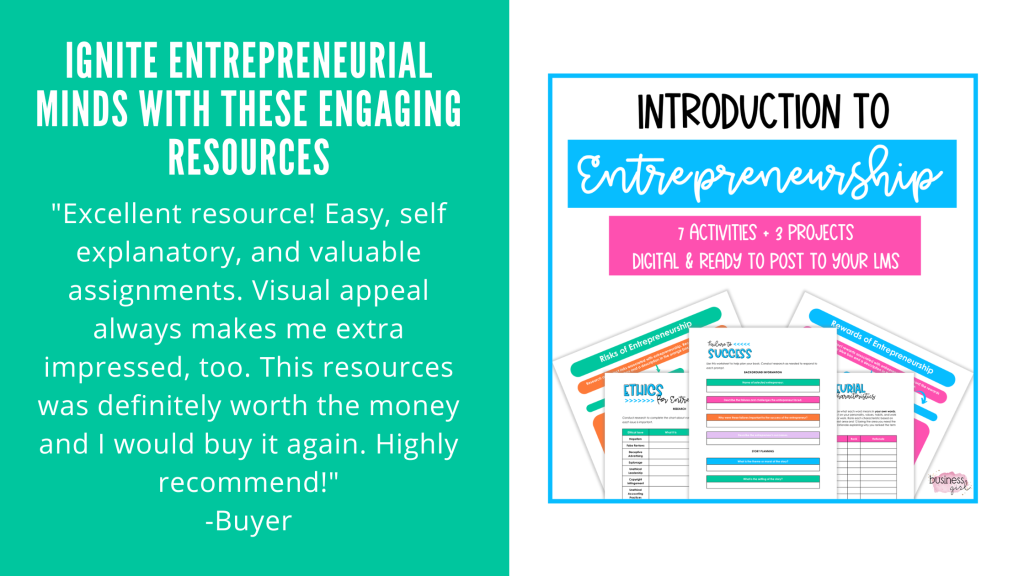Do you feel pressure to perform? Like you need to shoot fireworks out of your fingertips to entertain your students?
Do you dread those long presentations where you spend the class period talking and you’re even boring yourself?
It’s time you stop performing and start facilitating.
We’ve all had teachers who seemed to be more interested in talking at us than facilitating learning. They stood at the front of the classroom, delivering lectures and assigning homework, with little regard for student engagement or collaboration.
I want you to know, you don’t have to be a performer. Take some of the pressure off of yourself and empower your students to take ownership of their learning.
What is a facilitator?
A facilitator is someone who guides the class through the lesson, rather than just leading it. Facilitators encourage collaboration and participation, creating an environment where everyone’s ideas are valued. A facilitator encourages students to take an active role in their own learning, rather than just passively receiving information.

Why teachers should act as facilitators
The traditional teacher-performer model has limitations. Students can feel disengaged and unmotivated, and teachers can become burnt out from constantly performing. In contrast, the facilitator approach empowers students to take charge of their own learning, promoting critical thinking, problem-solving, and collaboration.
By acting as a facilitator, teachers can create a more interactive and engaging learning environment. They can encourage students to take ownership of their learning and help them develop essential skills such as communication and collaboration. This approach can also help teachers feel more fulfilled in their role, by promoting a more collaborative and dynamic classroom environment.
The benefits of a teacher acting as a facilitator in the classroom are numerous and impactful. Here are some key advantages:
1️⃣ Promotes Active Learning: By assuming the role of a facilitator, you encourage students to actively engage in their own learning process. Students become active participants, taking responsibility for their learning and developing critical thinking skills.
2️⃣ Fosters Student Independence: Facilitation empowers students to become independent learners. They learn to seek information, solve problems, and collaborate with peers, enhancing their self-confidence and self-directed learning abilities.
3️⃣ Encourages Critical Thinking: As a facilitator, the teacher guides students to think critically, analyze information, and draw their own conclusions. This approach cultivates higher-order thinking skills, such as evaluation, synthesis, and application of knowledge.
4️⃣ Enhances Collaboration: Facilitated classrooms foster collaboration among students. By encouraging group discussions, cooperative projects, and peer feedback, the teacher promotes teamwork, communication, and interpersonal skills.
5️⃣ Supports Individualized Instruction: As a facilitator, you can provide more personalized support and guidance to individual students. You can identify and address specific learning needs, adapting instruction to meet the diverse requirements of each student.
6️⃣ Stimulates Creativity: Facilitation encourages students to explore their own ideas, experiment with different approaches, and think creatively. It creates an environment where students feel safe to take risks, express their opinions, and innovate.
7️⃣ Develops Lifelong Learners: By acting as a facilitator, you instill a love for learning and helps students develop skills necessary for lifelong learning. Students become self-motivated, and independent, and take an active role in learning.
Embracing the role of a facilitator in the classroom can revolutionize the learning experience, nurturing a student-centered environment that cultivates critical thinking, collaboration, and lifelong learning skills.
How to become a facilitator
To become a facilitator, you need to shift your mindset from that of a performer to that of a guide. You should focus on creating a collaborative learning environment, where students feel comfortable sharing their ideas and opinions. This can be achieved by using techniques such as group work, discussions, and student-centered learning.
Also remember, it’s ok to take a step back and allow students to take the lead. Encourage your students to ask questions and promote discussion. By doing so, you can help students develop their critical thinking skills, engage with the material on a deeper level, and feel more invested in their own learning.
As students work on activities and projects, circulate the room. Ask questions about student work and encourage students to think deeper. With the facilitator role you have more time for one-on-one communication. This helps to build connections and community within the classroom.

Examples
In a classroom where the teacher acts as a facilitator, the learning environment becomes student-centered. Here are a few examples of how a teacher can embrace the role of a facilitator:
1️⃣ Guided Discussions: Instead of solely delivering information, facilitate discussions by posing thought-provoking questions and encouraging students to express their ideas. This approach promotes active participation, critical thinking, and respectful dialogue among students. One fun way to hold a class discussion is by using chat station gallery walks.
2️⃣ Project-Based Learning: With project-based learning experiences, students work collaboratively on real-world projects. You provide guidance, resources, and checkpoints, allowing students to take ownership of their learning and apply their knowledge in practical contexts.
3️⃣ Guided Research: Instead of using a presentation to deliver direct instruction, provide students with materials to conduct guided research. This could include questions, terms, advantages, disadvantages, etc. Students research the information instead of you talking at them. Try this strategy with the FREE Logo Research Activity and Timeline Project.
4️⃣ Role-Play: Students act out different scenarios to illustrate the lesson. Students learn by doing and draw conclusions from the experience. Try the Business Meeting Role Play for an example.
5️⃣ Simulations: Students experience the real-world. This could be anything from a short activity to a long-term project. Simulations provide a powerful tool for educators to create an immersive learning experiences. By engaging students in realistic, interactive scenarios, simulations promote active learning, critical thinking, collaboration, and real-world application, preparing students for success in an ever-changing world. ‘
Examples include:
6️⃣ Current Event Articles: Through reading about current events, students examine the real-world. Students can then share their findings with the class. Grab this free form to help you effortlessly integrate this activity into your lessons FREE Business Current Event Article Review.
7️⃣ Student Sharing: At the conclusion of a project, have students share their work, ideas, or findings with the class. Hold a discussion on their work and allow students to learn from each other.
By adopting the facilitator role, teachers empower students to become active participants in their learning journey. You create an environment that promotes critical thinking, collaboration, independent learning, and a lifelong love for learning.
Conclusion
By acting as a facilitator, teachers can create a more engaging and interactive learning environment, promoting critical thinking, problem-solving, and collaboration.
This approach can be achieved by promoting a collaborative learning environment and encouraging students to take ownership of their own learning. If you’re a teacher looking to promote more engaged and active learning, consider adopting the facilitator approach in your classroom.
Resources to help you flip the script





2 thoughts on “Why You Should Stop Performing and Start Facilitating”